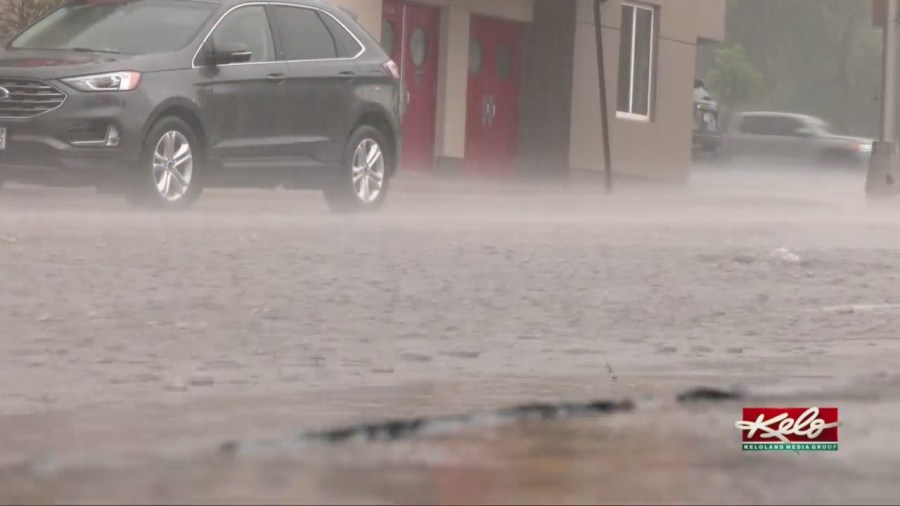SIOUX FALLS, S.D. (KELO) — Apartments, single family houses and businesses have replaced grass, even ponds, or scrubby grass around Sioux Falls.
Parking lots, rooftops and similar are referred to as impervious surfaces.
When it rained, especially like it did from June 20-22, rain runoff, or storm water runoff, used to soak into the ground or the pond before development. What happens now?
A design for a new development must include a plan for storm water runoff, said Aaron Fagerness, an engineer with the city of Sioux Falls.
The model is the drainage or runoff that happened before development needs to be similar to what happens after development, said Fagerness.
A developer may be required “to install a pond of some sort that is intended to offset the impact of runoff,” Fagerness said.
A storm drain system may carry run off to a regional pond through drainage pipes.
“It’s a trade off,” said Jay Gilbertson, manager of the East Dakota Water Development District. “The city of Sioux Falls needs places for people to live, you need to provide space. But it also recognizes the changes will have a very real impact.”
The city plans for about 500 to 600 acres of development each year, Fagerness said.
The city’s plan estimates impervious surfaces created with development.
Fagerness said new residential developments are 40% to 70% impervious surface. Apartment buildings will be at the higher end because of parking lots and rooftops. A commercial or industrial development will be 65% to 90% impervious surface.
Compare that to a city park, which will be about 10% because of sidewalks and parking.
Through June of this year, the city issued permits for 563 multiple family housing units and a total of 926 residential housing units.
The city can moderate the impact from the loss of green space and natural ponds, with a plan to help control the storm water runoff flow, Gilbertson said.
Even with storm water drainage systems in place in new developments, the city will still be sending a greater volume of water to the Big Sioux, Gilbertson said.
“With more impervious areas, there is less infiltration (into soil) that occurs,” Fagerness said. “You are sending more volume potentially downstream. There will be more volume than before construction.”
The key piece, is not letting it release in a huge flush, he said.
The pond system includes a total of 600 storm water ponds, Fagerness said. Those are private ponds installed by the developer or regional ponds. The city owns 130 of the ponds.
The ponds hold storm water at a specific depth for a certain amount of time, Fagerness said.
The storm water system is designed for peak flows and historic events, Fagerness said.
A 100-year-event is one of the design guidelines. Fagerness said the 100-year event is one with a 1% chance of happening. An example of that would be two inches of rain in 15 minutes, he said.
But it may be time to revisit that standard for a couple of reasons, Gilbertson said.
The city has more years of population and development and rainfall events to evaluate, he said.
“We are going to get much better numbers with a more current set from the past 25 years,” Gilbertson said.
The city’s population in 1987 about 99,000 and today, it’s an estimated 213,000.
Five of the city’s top 10 24-hour precipitation amounts have been recorded since 2004 and four since 2018, according to the National Weather Service (NWS). The most rain ever recorded with the city was 7.52 inches from 5 p.m. to 10 p.m. on Aug. 27, 2015, in parts of southwestern Sioux Falls, according to the NWS.
Fagerness said there is discussion of climate change resiliency design, but Sioux Falls is not using it. He’s not aware of any communities near Sioux Falls that implementing such designs.
In 2020, The National Oceanic and Atmospheric Administration predicted that annual precipitation in South Dakota is projected to increase, with the largest increases occurring during spring and winter. Heavy precipitation events are also projected to increase, leading to increased runoff and flooding.


